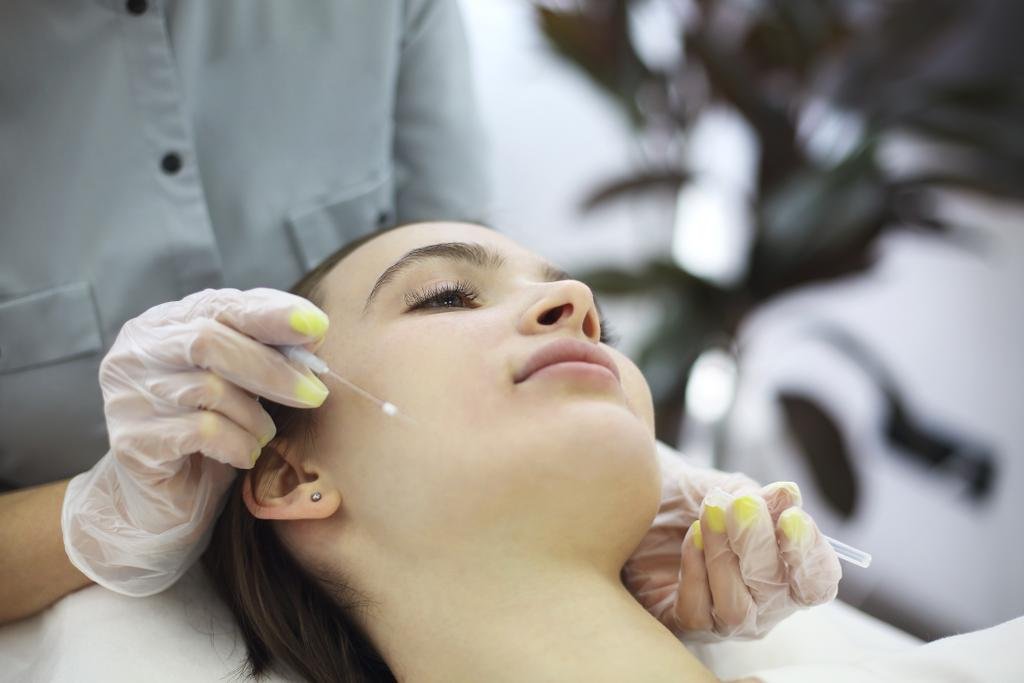PDO threads, a revolutionary cosmetic procedure, have garnered significant attention for their ability to rejuvenate and lift the skin without surgery. In this guide, we delve deep into what PDO threads are, their effects before and after the procedure, and everything in between.
Understanding PDO Threads
PDO threads, or Polydioxanone threads, are used in a minimally invasive procedure for skin rejuvenation. They come in various types and work by inducing collagen production in the skin beauty, providing a natural lift and rejuvenation.
What are PDO Threads?
PDO threads are synthetic fibers used in thread lift procedures. They are inserted under the skin to lift and tighten sagging tissues. The threads dissolve over time, but the effects last longer due to increased collagen production.
Types of PDO Threads
There are various types of PDO threads, each designed for specific areas and purposes. These include mono threads for subtle rejuvenation, cog threads for more significant lifting, and screw threads for volumizing.
How PDO Threads Work
PDO threads work by creating a controlled injury under the skin, which triggers the body’s natural healing response. This leads to increased collagen production, resulting in firmer, smoother, and more youthful-looking skin.
Benefits of PDO Thread Lift
The benefits of a PDO thread lift are manifold. It provides immediate lifting effects, improves skin texture and tone, minimizes fine lines and wrinkles, and offers results with minimal downtime.
The PDO Thread Procedure: What to Expect
The PDO thread procedure typically takes around 45-60 minutes. It involves numbing the target area with local anesthesia, followed by the insertion of threads using fine needles. The procedure is relatively painless and does not require general anesthesia.
Recovery and Aftercare
Post-procedure care is crucial for optimal results. Patients may experience mild swelling and bruising, which usually subside within a few days. It’s important to avoid strenuous activities and follow the aftercare instructions provided by your dermatologist.
Potential Risks and Side Effects
While PDO thread lifts are generally safe, they are not without risks. Potential side effects include infection, minor bruising, and discomfort. It is essential to choose a qualified and experienced professional to minimize these risks.
Long-Term Results and Maintenance
PDO threads offer results that can last anywhere from 6 to 18 months. The longevity of the results depends on the type of threads used, the individual’s skin condition, and lifestyle factors. Maintenance treatments can help prolong the effects.
Comparing PDO Threads with Other Treatments
When compared to other anti-aging treatments like fillers or Botox, PDO threads offer a more natural lift and longer-lasting results. They are also less invasive than traditional facelift surgery, making them a popular choice for those seeking a middle ground.
Cost of PDO Thread Lift
The cost of a PDO thread lift varies based on the number of threads used, the area treated, and the geographic location of the clinic. Generally, it is more cost-effective than a surgical facelift.
Choosing the Right Professional
Selecting the right professional for your PDO thread lift is crucial. Look for board-certified dermatologists or cosmetic surgeons with extensive experience in thread lift procedures.
PDO Threads Before the Procedur
Before undergoing a PDO thread lift, it’s crucial to understand the expected outcomes and prepare accordingly. The consultation process will help you set realistic expectations and plan the procedure tailored to your needs.
The Importance of Initial Consultation
The journey to a PDO thread lift starts with a consultation. During this session, your practitioner will assess your skin’s condition, discuss your aesthetic goals, and determine if PDO threads are the right choice for you.
Setting Realistic Expectations
One key aspect of the pre-procedure phase is setting realistic expectations. Understanding what PDO threads can and cannot do will help you feel more satisfied with the results.
Choosing the Right Practitioner
Selecting a skilled and experienced practitioner is crucial. Ensure they are board-certified and have a portfolio of successful PDO thread procedures.
Medical History and Evaluations
Your medical history will be reviewed to ensure you are a suitable candidate for the procedure. This includes discussing any medications you’re taking and any known allergies or medical conditions.
Pre-Procedure Instructions
Following pre-procedure instructions is vital for a smooth process and optimal results. These may include avoiding certain medications, alcohol, and specific food items that can increase bruising or swelling.
Skin Care Routine Before the Procedure
Your skin care routine may need to be adjusted in the days leading up to the procedure. This could include avoiding certain products or treatments that could irritate the skin.
Managing Expectations and Anxiety
It’s normal to feel anxious before a cosmetic procedure. Discuss any concerns with your practitioner, and consider relaxation techniques if needed.
Diet and Hydration
Maintaining a healthy diet and staying hydrated before the procedure can aid in the healing process. Some practitioners may recommend specific dietary adjustments to improve skin health.
Day of the Procedure: What to Expect
On the day of the procedure, you should come well-rested and with a clean face. Wear comfortable clothing and arrange for transportation if needed.
Immediate After Effects of PDO Threads
Immediately after the procedure, patients can expect mild swelling and redness. This initial phase is crucial for the healing process and sets the stage for the long-term effects of the treatment.
Long-Term Effects of PDO Threads
PDO threads offer lasting results, typically visible after a few months. These include improved skin texture, reduced sagging, and a natural, youthful appearance. We’ll explore some case studies to illustrate these changes.
Comparing Before and After
The most striking aspect of PDO threads is the visible difference before and after the procedure. This section includes before-and-after photos and testimonials from patients who have experienced the transformative effects of PDO threads.
Risks and Side Effects
While PDO threads are generally safe, they do come with potential side effects, such as minor bruising or discomfort. Understanding these risks is crucial for anyone considering the procedure.
Caring for Your Skin Post-Procedure
Post-procedure care is vital for maximizing the results of PDO threads. This includes gentle skincare routines and avoiding certain activities to ensure proper healing.
Cost and Accessibility of PDO Threads
The cost of PDO threads varies depending on the clinic and the extent of the treatment. We’ll provide insights into what you can expect to pay and how to find a reputable provider.
PDO Threads vs. Other Cosmetic Procedures
Comparing PDO threads with other cosmetic procedures helps understand why they might be the preferred choice for some. We’ll discuss the advantages of PDO threads over traditional surgical methods.
Expert Opinions
Hear from leading cosmetic surgeons about the efficacy and safety of PDO threads, providing an expert perspective on this popular procedure.
Future of PDO Threads
Looking ahead, PDO threads are likely to continue evolving, with new techniques and applications emerging. This section explores the potential future developments in this field.
FAQs About PDO Threads
How long do PDO thread lifts last?
- PDO thread lifts typically last between 6 to 18 months, depending on various factors such as the type of threads used and individual skin characteristics.
Is the PDO thread lift procedure painful?
- The procedure involves minimal discomfort, thanks to local anesthesia. Some patients may experience mild soreness post-procedure, which usually subsides quickly.
Can PDO threads replace a surgical facelift?
- While PDO threads offer significant lifting and rejuvenation, they do not provide the same level of correction as a surgical facelift. They are ideal for those seeking less invasive options.
Are there any activities I should avoid after the procedure?
- It’s recommended to avoid strenuous physical activities and excessive facial movements for a short period after the procedure to allow proper healing.
How do I know if I am a good candidate for PDO threads?
- A good candidate for PDO threads is someone with mild to moderate skin laxity. A consultation with a qualified professional can determine if PDO threads are suitable for your needs.
Conclusion
PDO threads represent a significant advancement in non-surgical skin rejuvenation. They offer a safe and effective way to combat the signs of aging, with minimal downtime and lasting results. If you’re considering a PDO thread lift, consult with a qualified professional to see if it’s the right choice for you.


